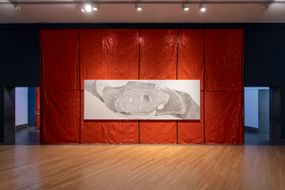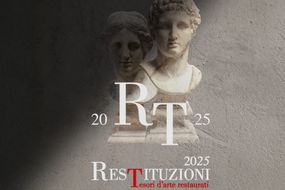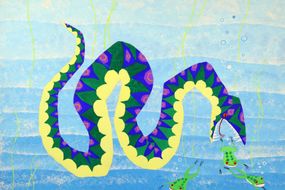From 16 November to 16 December 2023
Accepted the Artsupp Card
This new exhibition arises from Shoko's innate attraction to trees, especially the venerable "tree patriarchs" who survive in sacred areas near Japanese temples. When the threshold of one of these sacred spaces is crossed, the artist says, something special is perceived: a change in atmospheric moods, a spiritual inspiration, the manifestation of a presence.
Often, if environmental conditions are favorable, trees can have lives infinitely longer than humans, and in Japan there is a specific ceremony, called Tobusatate (とぶさたて) , which is celebrated when a tree is cut down to provide wood for the construction of a sanctuary or a torii , the characteristic portal that marks the access to a sacred area. The ritual involves a branch taken from the tree being inserted into the center of the main stump: finally, the tree is thanked for having been able to use it. Part of the works on display here are inspired by this ritual practice: the paint is spread directly on sections of hinoki - the Japanese cypress, a tree considered sacred - and the pictorial composition is calibrated in correspondence with the center of the trunk, since this particular it is important in the sacred ceremony of Tobusatate . The clay materials on which the paintings were made come directly from Japan, and more precisely from Nishikawa Baum, a forestry company in Hanno, in the Saitama prefecture, which the artist sincerely thanks.
These are some of the trees that inspired the artist, and each of them has been associated with a code that allows them to be geolocalised. The tree portraits on display here effectively represent the current condition of each tree, but, by using these codes, subsequent generations will also be able to identify and recognize them, and therefore see their appearance and vegetative condition in years to come: they may have grown more , but in some cases they may also have been cut down, or the forest may even have disappeared completely, due to human pressure on the relevant territory.
Each painting depicts an ephemeral scene from the natural world, reflected in the rippling water, inviting one to meditate on the transience of life itself.
Her personal events – including a serious and recent illness – have pushed Shoko to reflect on how to contribute more to the conservation of nature through artistic practice, and what will remain after her passing. Illness or loss of health often leads us to perceive, with painful proximity, the "here and now" linked to that brief parenthesis which is, ultimately, human life, considered in the prospective succession of the various historical eras. This series of portraits of trees therefore arises from meditations of this kind, which certainly have an inherent root in the Shinto spiritual and cultural tradition, inspired more by appreciation and gratitude for the gifts of nature rather than by fear of the forces manifesting in it: in this universe teeming with conscious life, everything flows and everything is caressed by the artist's light brush.
At the center of this exhibition there is a significant ecological commitment that expresses the artist's profound desire to promote environmental conservation: part of the proceeds will contribute to the creation and maintenance of a real forest that Manifiesto Blanco is committed to growing with the participation of artists, members and visitors, ensuring a greener and more sustainable future.
The project will be developed with the partner Treedom , which will certify the real actions in the area.
Shoko Okumura was born in Japan in 1983 and graduated in Traditional Japanese Painting at Tokyo University of the Arts. In 2008 he received a prestigious scholarship allocated by the Japanese government and, immediately after graduation, he moved to Italy to further his art studies.
In more recent years his activity has also extended to Japan, where he has exhibited at some well-known art galleries, including Takashimaya and Mitsukoshi art gallery. Other prestigious collaborations have materialized in the fashion sector, with works commissioned by Serapian Milano, Homo Faber Venezia and Toma shoes as part of Milan Fashion Week: finally he created a site-specific work for the Bulgari hotel in Tokyo.
This exhibition, produced by Manifiesto Blanco, was organized in collaboration with Nishikawa Baum

Via Benedetto Marcello, 46, Milan, Italy
Opening hours
| opens - closes | last entry | |
| monday | Closed now | |
| tuesday | 10:00 - 19:00 | |
| wednesday | 10:00 - 19:00 | |
| thursday | 10:00 - 19:00 | |
| friday | 10:00 - 19:00 | |
| saturday | 10:00 - 19:00 | |
| sunday | Closed now |
Possibility of visiting outside opening hours by appointment agreed by phone (tel 389 5693638)
Always
There are no ongoing exhibitions.
Free
Guided tour with the artist by reservation
Complimentary exhibition brochure

From 4 October to 18 January 2026
Atelier of Mistake

GAMeC, Bergamo

Artsupp Card: museum + exhibitions 4.00 €

From 28 October to 18 January 2026
RETURNS 2025

Palazzo delle Esposizioni, Rome

Artsupp Card: museum + exhibitions 10.00 €

From 2 October to 15 February 2026
Worlds, travels, stories... and then there's Jacovitti.

Santa Giulia Museum, Brescia